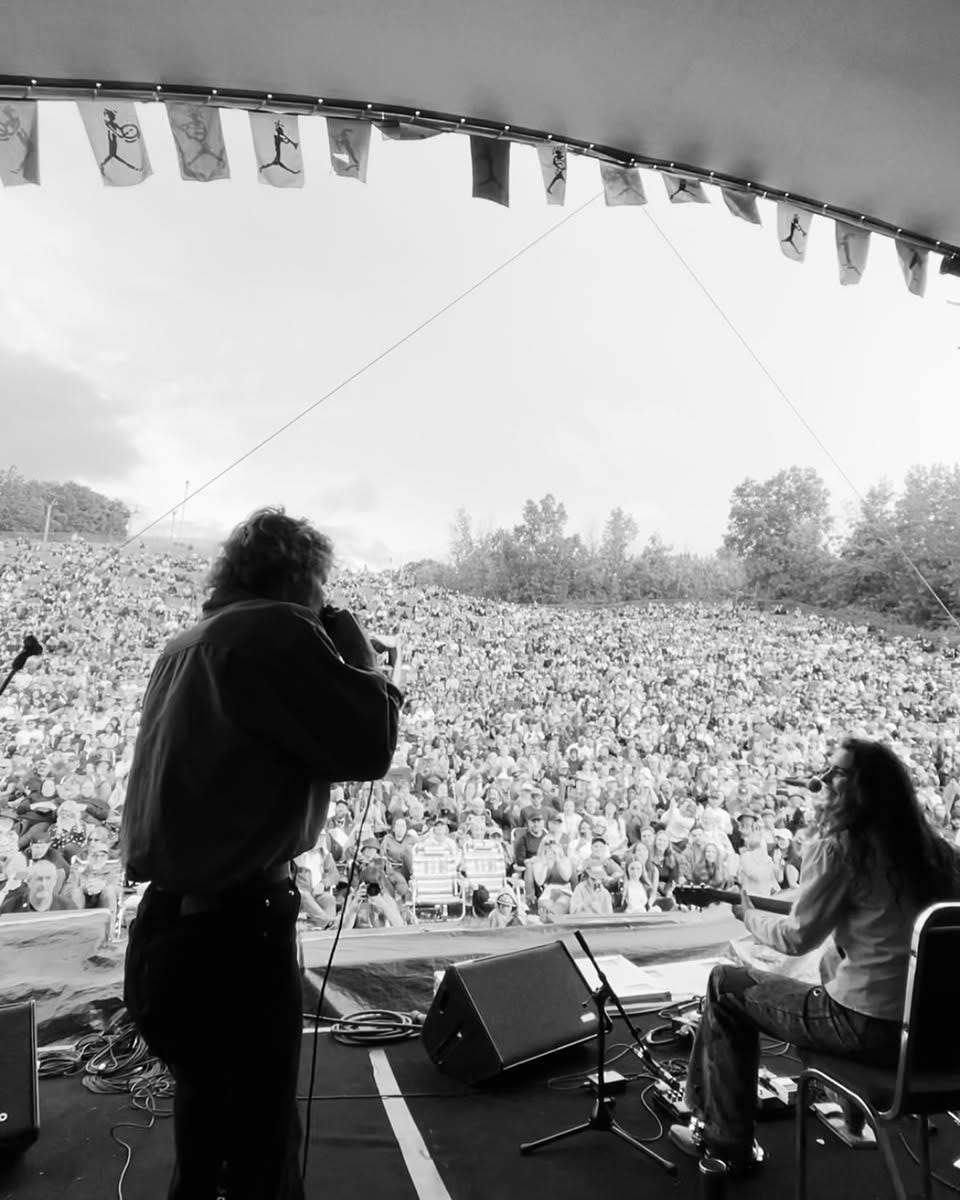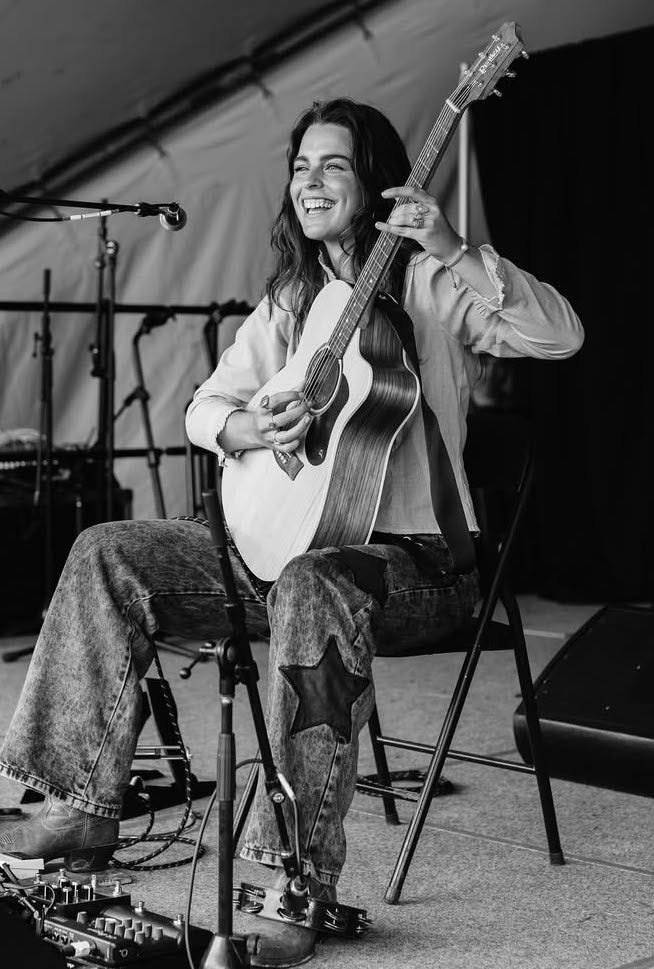Stories from the Edge of Music #67: THE “IT” FACTOR
And my “discovery” of the year, Steph Strings
Australians rule! Bands like the Black Sorrows, Weddings Parties Anything, the Bushwackers and the Teskey Brothers have always knocked me out. And one of my very first musical heroes was Graeme Bell, who led a sophisticated, chart reading Dixieland jazz group that was the first Australian band to tour Europe in the immediate postwar period.
They also make killer guitarists Down Under — you can start out with the established players John Williams, the great classical guitarist, and Tommy Emmanuel, who can play just about anything.
And now there’s a newer crop: Kim Churchill, Lloyd Spiegel, and my personal “discovery” of the year, Steph Strings.
Steph, in particular, has “it” — the impossible element that make musicians memorable, and — at one level or another — stars.
++++++++++++++++++++++++++++++++++++++++++++++++++++++++

TRYING TO DEFINE “IT” — THE IMPORTANT ELEMENT A TRULY SUCCESSFUL ARTIST MUST HAVE
My computer savvy friends tell me that IT stands for “information technology.” But folk who work in music — and other arts, including film, visual arts, theatre, and literature — believe that “it” is the indefinable quality that makes a good artist a great one.
“It” is a description, in music, for an artist with a distinctive voice, unique songs, perhaps a different “look” (which is of even greater importance in theatre or film), and a memorable stage presence. But “it” is subjective — your “it” artists may be different from mine, or those of your parents and friends.
“It” can be spotted early, and it transcends musical genres; here are a few of the Canadian artists who have the it factor.
Serena Ryder had it when she was 17 and I took her to her first Mariposa Folk Festival. I saw it at the Edmonton Folk Festival a couple of decades ago when k.d. lang grabbed the audience by the balls (pardon the expression) and wouldn’t let go. I saw it when I heard Loreena McKennitt busking outside St. Lawrence Market in Toronto. I heard it when the Downchild Blues Band with Hock Walsh on vocals played grungy bars in the early ’70s. And Justin Rutledge had it when he was working at a small Toronto club, and came out from behind the bar to sing a single song.
William Prince has it and so does Nyssa, though she’s vanished to the UK. Carole Pope still has it. The late Ian Tyson, grumpy as he often was, had it for his whole career. Some widely known stars — Bob Dylan and Van Morrison, for instance — have so much “it” that the whole world can see it, but they don’t give a shit.
And some have a lot of “it” — but perhaps lack some or even all of the following: ambition, focus, energy, musical and vocal chops, a good team around them, luck, and opportunity. In cases like this, the it factor, by itself, doesn’t help.
In fact, you really can’t define “it.” As a judge said years ago, you can recognize pornography from art or erotica when you see it. And you can recognize “it” when you see and hear an artist who knocks you back on your heels, makes the hair on your arms stand up, makes you listen and makes you tell your friends about what you’ve heard.
To quote my fellow Substack writer, Bill King: ‘It’ is when “you know you’re hearing something cut from conviction, not compromise.”
Please share your own ideas about “it” — it’d be lovely to read them in comments or e-mails!
+++++++++++++++++++++++++++++++++++++++++++++++++++++++++++++++++

MEET STEPH STRINGS — MY PERSONAL “IT” ARTIST OF THE YEAR
Steph is a major artist in her native Australia, and she’s on her way to becoming one in North America. I first heard her at the Canmore Folk Festival; I wandered over to her afternoon concert, which was already half over — she was playing her acoustic guitar flat across her lap in the way that the late Jeff Healey did.
There was Jeff’s same fluidity, the same strong tone, though the music was as different as fine white wine is to bourbon. Within seconds, she was holding her guitar upright above her head, tapping out rhythmic patterns with both hands on the neck.
A trick? Yes. Show biz? Yes. But the next song was quiet, wistful, moving and gentle. This was “folk” in the solo singer-songwriter tradition, but her songs were more intriguing than most, with odd but effective chord and tempo changes that kept you listening.
Her onstage presence is warm and informally friendly. Her smile lights up her audience. You hear her talk and you instantly like her. Yes, I thought instantly: this woman has “it” in abundance.
Raise a glass to this woman. Check her website and YouTube. And next time she escapes the Australian winter to join us in our summer, don’t miss seeing her live. You can thank me later.
++++++++++++++++++++++++++++++++++++++++++++++++++++++++++++++++
BEHIND THE PAYWALL — COMING UP JUST FOR THE PEOPLE WHO PAY FOR MY COFFEE
• Ten non-musical Substacks you should discover
• This week’s best rant: What happened to the FBI?
And next time, for everyone, Louis Armstrong revisited, 55 years after his passing.
Keep reading with a 7-day free trial
Subscribe to Stories from the Edge of Music to keep reading this post and get 7 days of free access to the full post archives.


